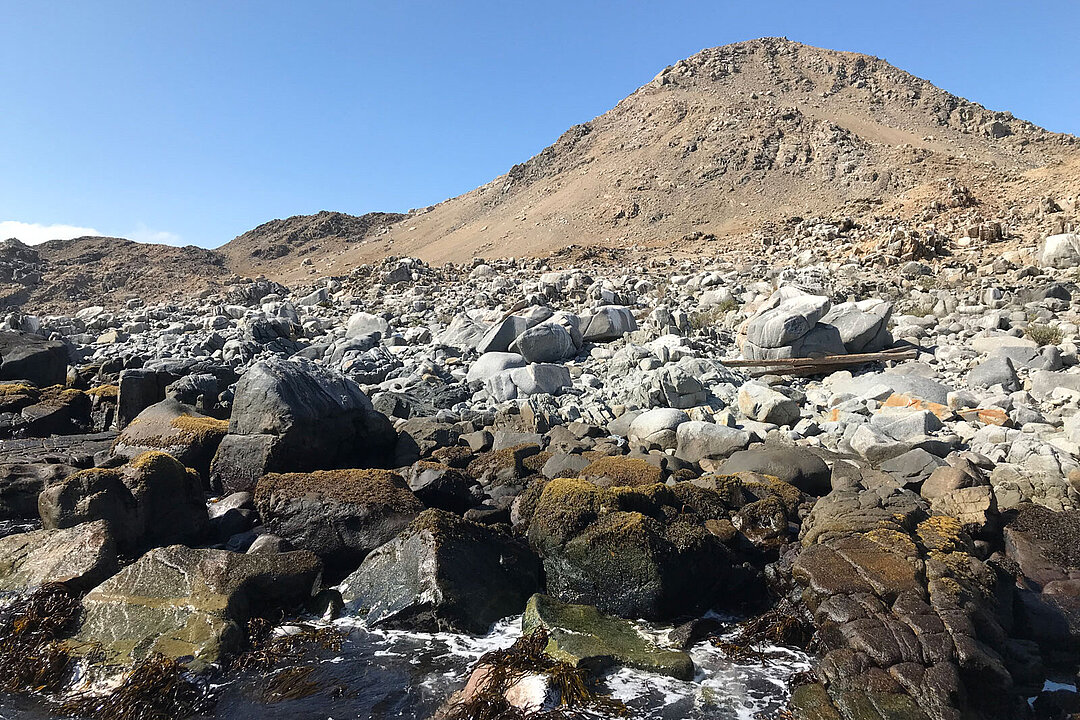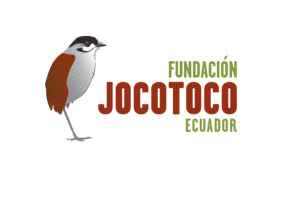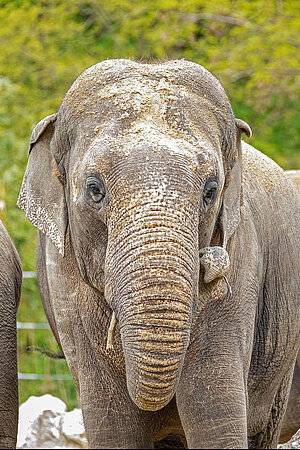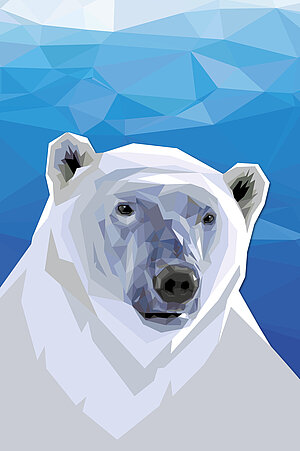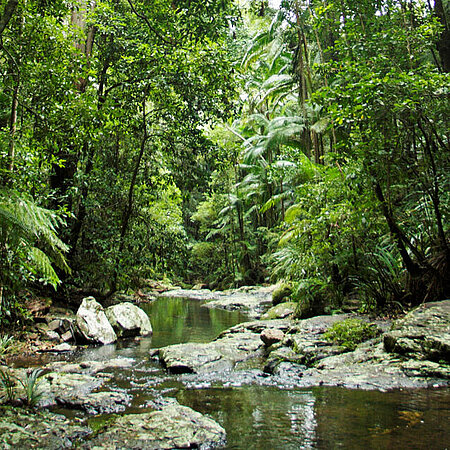
The double continent of the Americas stretches from the Arctic in the north to the southern polar region and includes almost every type of biome found on our planet. This gives it an impressive biodiversity. The species conservation projects that we support face a wide range of problems, which are as diverse as the habitats. They include climate change, human-animal conflicts, poaching, mining, deforestation and overfishing.
Saving the brown-headed spider monkey in the Canandé Reserve in Ecuador
Hellabrunn Zoo is committed to protecting the brown-headed spider monkey in the Canandé Reserve in northern Ecuador. It is home to the largest remaining population of the critically endangered subspecies of the black-headed spider monkey. Canandé Reserve is owned and operated by the Fundación Jocotoco (Jocotoco Conservation Foundation) and is supported by Hellabrunn. The zoo pays the salaries of two park rangers.
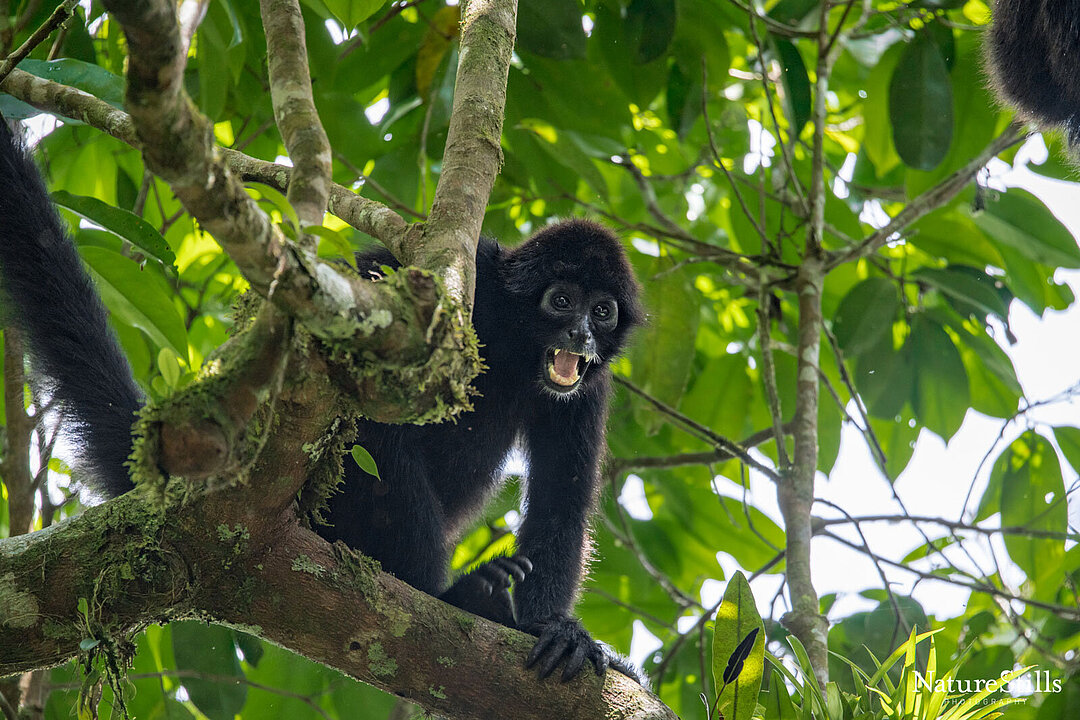
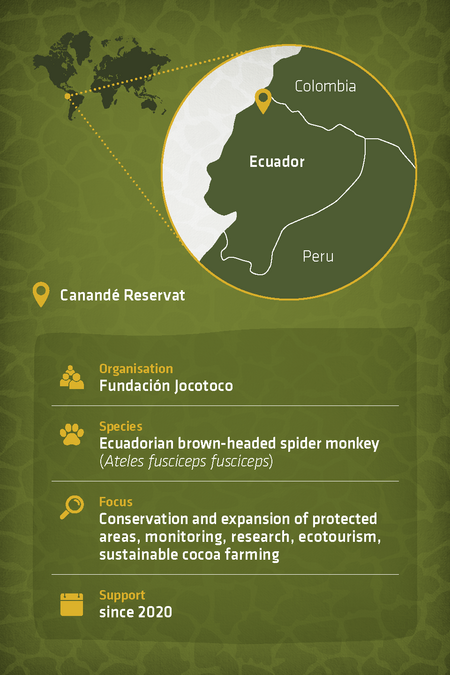
Biodiversity hotspot under threat
Fundación Jocotoco has acquired over 23,000 hectares of rainforest in Ecuador to protect and established a nationwide network of 15 reserves. It works closely with the local population, creates jobs and coordinates important education and awareness programmes. The Canandé Reserve encompasses just under 10,000 hectares of protected land in the Chocó lowland rainforest northwest of the Ecuadorian Andes. This rainforest is particularly rich in species and is considered one of the five most important biodiversity hotspots on Earth. However, the increasing construction of roads and housing for the growing population has resulted in one of the highest deforestation rates in South America. Only 2-5 per cent of the original forest area remains. Fundación Jocotoco aims to expand the Canandé Reserve to connect it with two neighbouring national parks, the El Pambilar Wildlife Refuge and the Cotacachi Cayapas Ecological Reserve, in order to create one large biodiversity conservation corridor.
Home for the Ecuadorian brown-headed spider monkey
With a population of fewer than 500 individuals, the Ecuadorian brown-headed spider monkey is one of the most endangered primates in the world. The Canandé Reserve is home to over 250 of these monkeys, who live in groups of up to 30 individuals. It is one of the largest known populations of this subspecies. Daily observations by park rangers indicate that the monkeys are successfully reproducing. However, exact population numbers are difficult to determine because of the complex terrain and the fact that the spider monkeys spread out in small groups during the day.
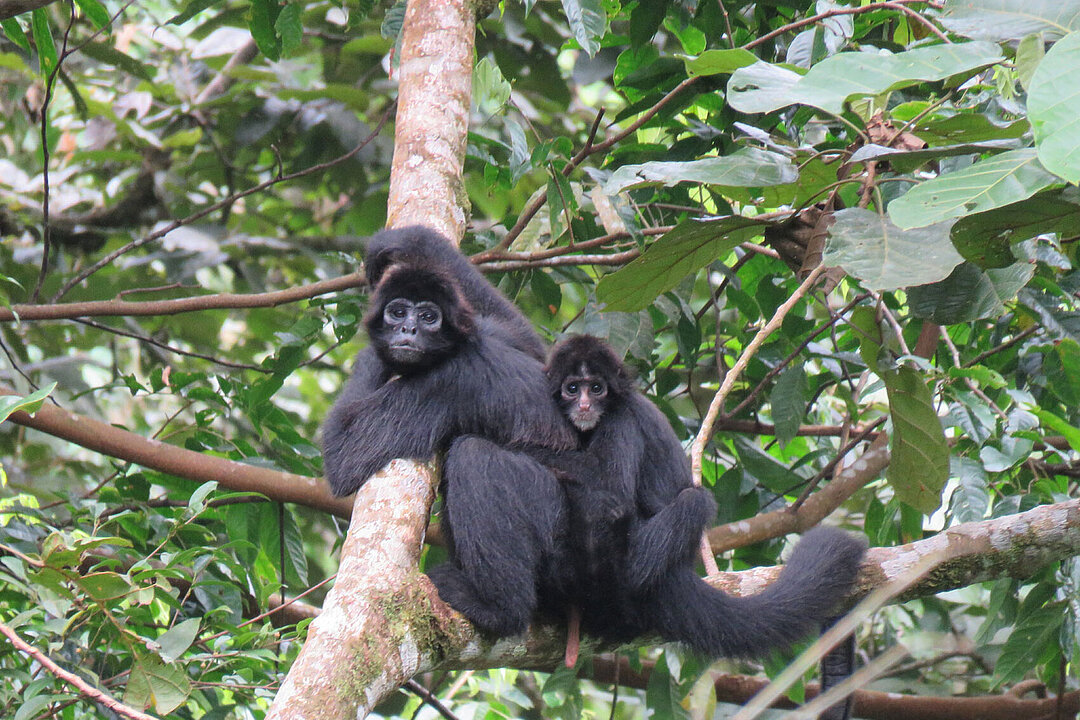
Research in the Canandé Reserve
Since 2021, a German-Ecuadorian research group comprising researchers from 14 universities has been working in the Canandé Reserve. The aim of the research project funded by the German Research Foundation (DFG) is to study the resilience and natural renaturation of the Chocó rainforest. The project includes an intensive four-year study of the population of brown-headed spider monkeys in the Canandé Reserve, which will help improve conservation efforts for the critically endangered species.
Tracking polar bears in Canada's Hudson Bay
Polar Bears International is the only non-profit organisation dedicated solely to wild polar bears and their habitat. Since 2014, Hellabrunn Zoo has been supporting the organisation’s Bear Tracker programme, which fits radio collars on polar bears living in Hudson Bay in Canada to collect important scientific data.
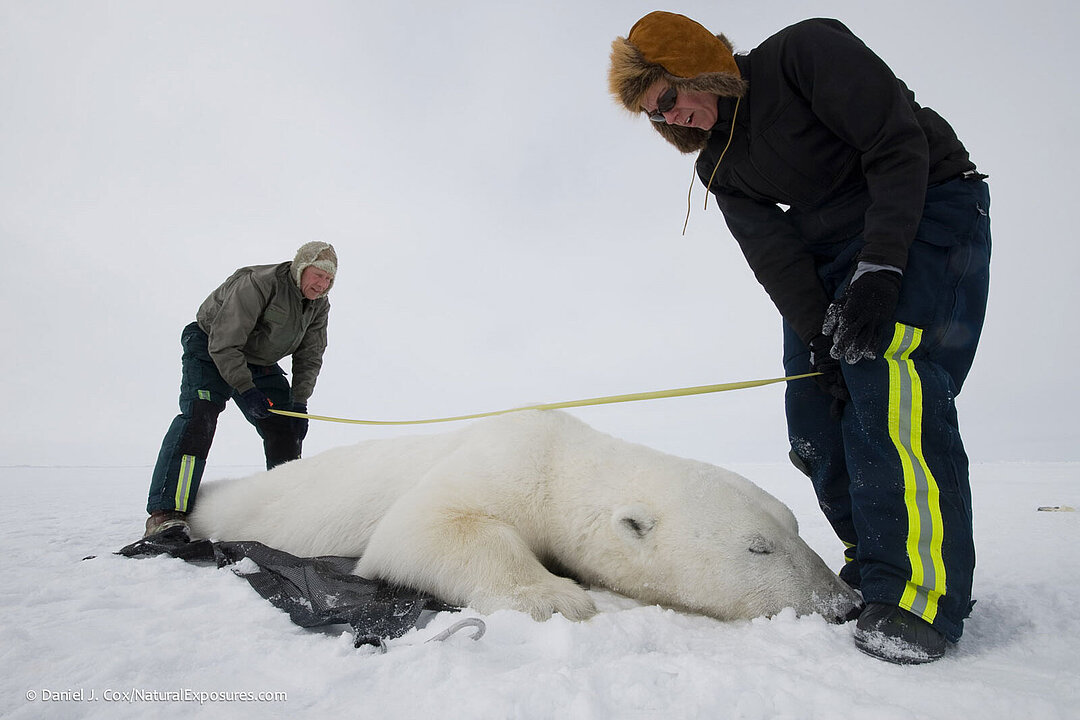
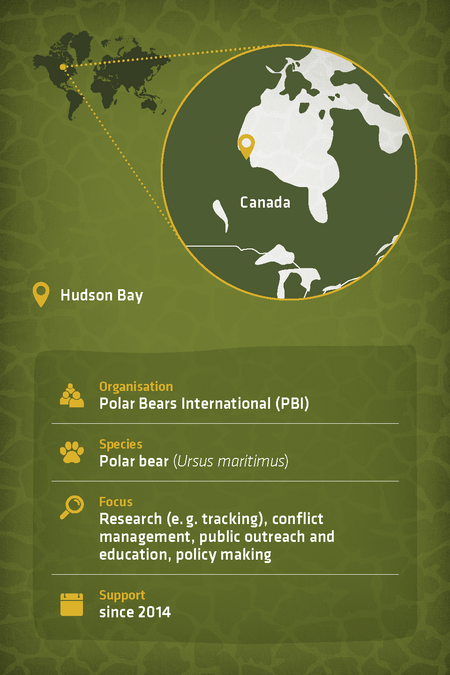
White giants under threat
Global climate change poses a deadly threat to polar bears. Over the past 100 years, air temperatures in the Arctic have risen by an average of 5°C. This has dramatic effects: both the ice extent and the ice thickness have decreased massively in the last few decades. The ice melts earlier in spring and returns later in autumn. But polar bears depend on the Arctic pack ice. The ice is the only means they have to hunt their favourite prey, ringed seals. However, the period in which polar bears can hunt seals and build up sufficient fat reserves for the ice-free period is becoming shorter and shorter. This poses a threat to the polar bears’ livelihood.
A collar for science
Polar Bears International collects important scientific data on habitat use, distribution, reproduction rate and population size of polar bears in Canada's Hudson Bay through the Bear Tracker programme. Scientists regularly catch polar bears, examine them thoroughly under anaesthetic and then fit them with a radio collar. These collars enable the scientists to track all movements of the bears. It also has a special sensor that indicates how much time the bears spend in the water. The information gathered provides an insight into the effects of ice retreat in the Arctic. Only female polar bears are collared. Males have necks that are thicker than their head, which means the collar would simply fall off. The collars are very light for a polar bear and are programmed to automatically fall off after about 14 months.
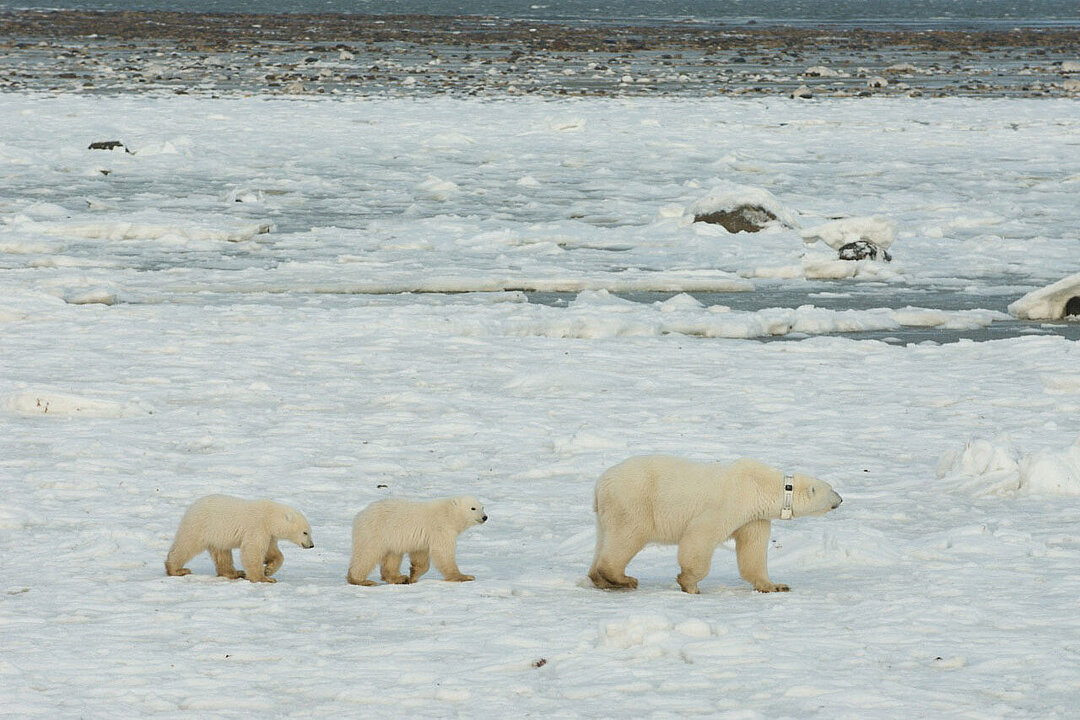
Hellabrunn Zoo has been designated an Arctic Ambassador Center since 2017. The title is given to zoos, aquariums, and wildlife parks that work collaboratively with Polar Bears International to protect polar bears in Canada's Hudson Bay. Together, the Arctic Ambassadors cover the cost of one radio collar for a polar bear. This is currently bear X33203. She was collared in November 2022. At the time, she was 18 years old and had two yearling cubs in tow. The movements of bear X33203 can be found on the Polar Bear Tracker under the name Arctic Ambassador. You can also follow the movements of other polar bears with radio collars via the Bear Traker Map.
Protecting the Humboldt penguin in Chile and Peru
Hellabrunn Zoo is a member of Sphenisco e.V., an association dedicated to the protection of the Humboldt penguin. The association works together with local conservationists and scientists in Chile and Peru to save the Humboldt penguin from extinction in its natural habitat.
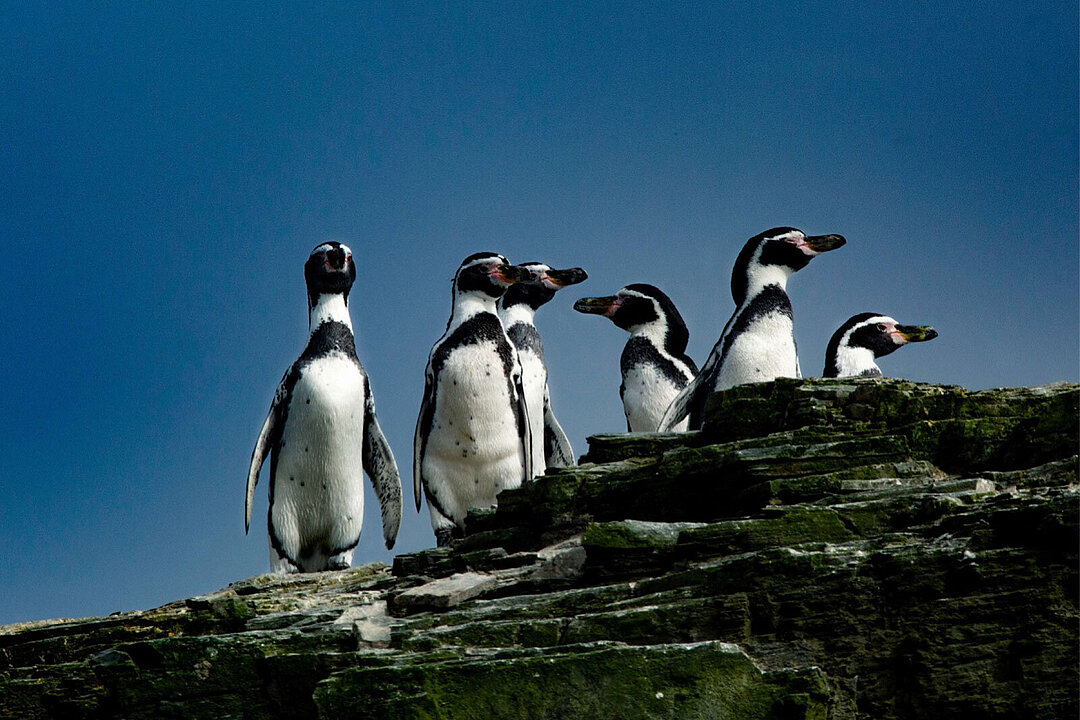
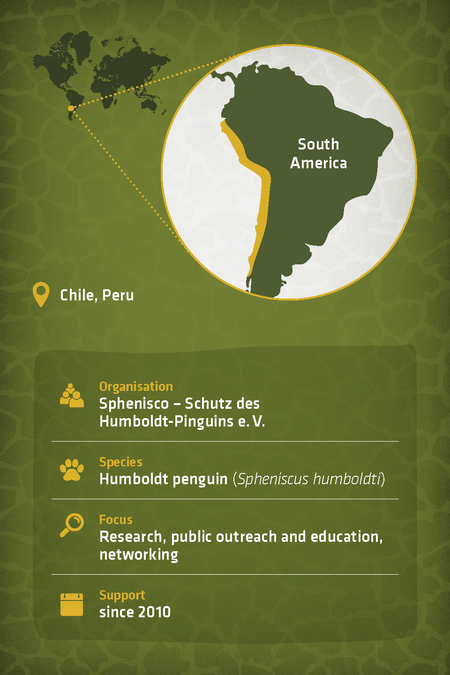
Contested breeding grounds
As sea creatures, Humboldt penguins face many threats. Climate change, overfishing, marine pollution, harvesting of guano and illegal capture are the main causes of endangerment of the South American penguins, which are listed as vulnerable by the IUCN. But the Humboldt penguins’ population is also threatened by the destruction of important breeding grounds in northern Chile due to port construction and other infrastructure projects.
Protection through education
Sphenisco's work focuses on environmental education and raising awareness. For many years, the association has been supporting local organisations in educating the population, a campaign primarily aimed at school children and fishermen. In addition to its public awareness campaign, Sphensico actively lobbies for the protection and monitoring of breeding colonies, the establishment of sustainable marine protected areas, the enforcement of gillnet fishing bans and a ban on fishing with dynamite. As a founding member of Alianza Humboldt, Sphenisco works closely with local and international partners who are committed to protecting the Humboldt penguin.
Important research
Research on the current population figures, breeding success and foraging of Humboldt penguins can provide important arguments for the establishment of marine protected areas. Sphenisco therefore supports in-situ research projects by Chilean and Peruvian scientists who have been conducting population surveys in the most important Humboldt penguin breeding colonies for many years.
